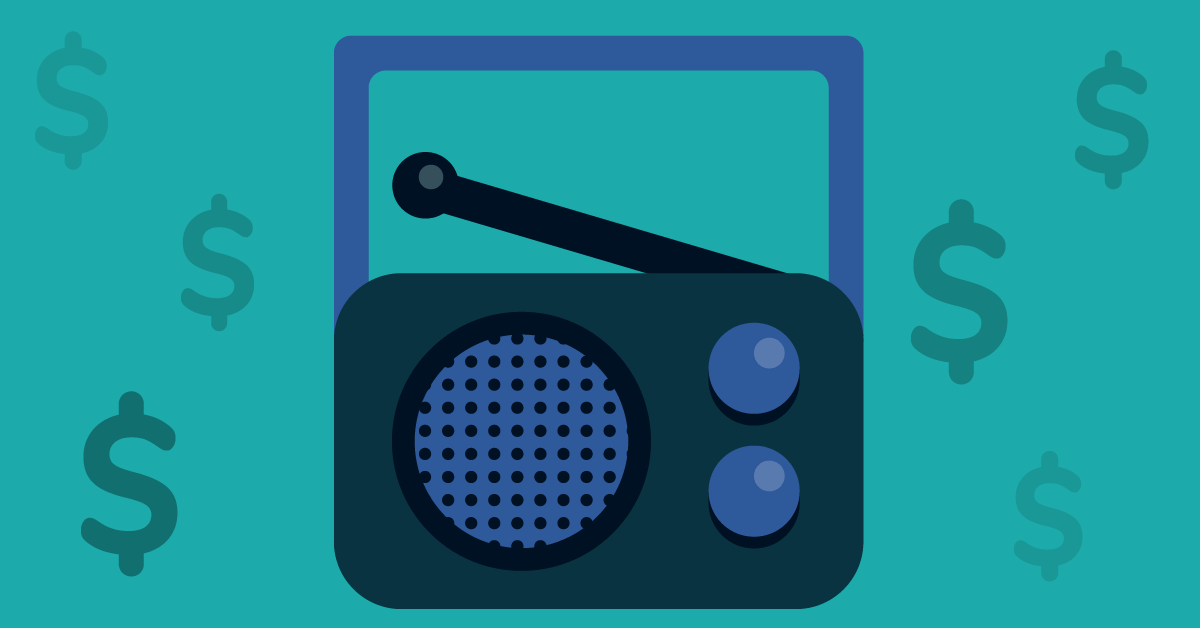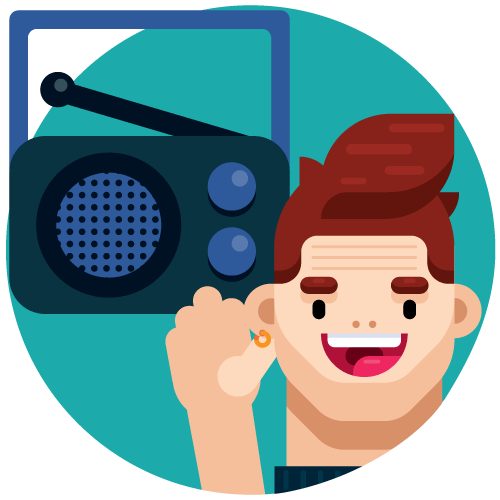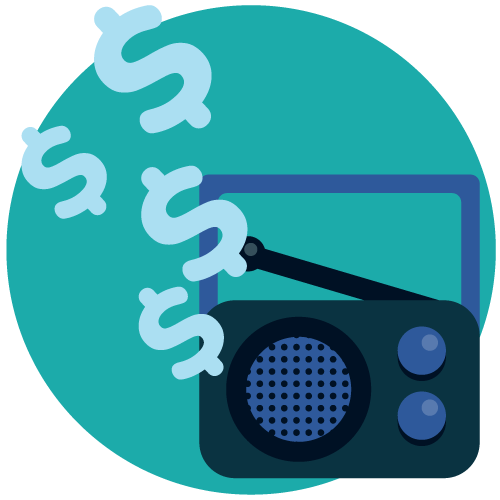How to advertise on radio

Today we’re diving into the traditional advertising method that dominates the airwaves– radio advertising. Almost everyone in the U.S. has access to terrestrial radio, making it one of the easiest ways to reach millions of ears using traditional marketing. Terrestrial radio stations broadcast from land-based towers (AM and FM). These are the types of stations you get in your car or on a portable radio. Terrestrial radio does not work the same way as streaming audio, like Spotify or Pandora. Everything we discuss in this article is specific to advertising on terrestrial radio.
If you need some pointers on streaming radio advertising, check out our article here.
As with any marketing strategy, clients often ask us: how do I advertise on radio? Will radio advertising work with my budget and help me achieve my goals? Although we can’t answer these questions for you, we will shed some light on how to advertise on radio to help you decide. There’s more to purchasing a spot and running an ad than meets the eye. If you’re curious about when to use terrestrial radio advertising, the cost of radio ads, and how to find your target audience, read on!
When to advertise on radio
Businesses of all sizes advertise on radio to spread their message over the airwaves. Because it’s free and widely accessible, radio advertising is excellent at boosting brand awareness and reaching a wide audience. Radio media remains powerful thanks to its loyal listeners. According to Pew Research, in 2020, 83% of Americans ages 12 or older listened to terrestrial radio in a given week, a figure that remains steady to this day.
Traditional media has a reputation for being expensive. However, radio ads are generally cheaper compared to their print and broadcast television counterparts. Production costs are lower since you are not paying actors, photographers, or the crews needed to create commercials or print ads. All you need is a voice and a script.
Radio shines in its ability to build trust and connect with audiences. Where other marketing tactics rely on visuals, radio advertising pairs your brand with a voice in a way that allows you to openly speak to your listeners. Radio personalities, voice actors, or even business owners themselves can read the advertisements. Incorporate sound effects, add a jingle, and use storytelling to create images that drive recall and retention.
Where does radio advertising fall short? Turnaround time. Radio spots take time to produce. A script needs to be written, recorded, and sound effects or music added before a polished product is played on air. If you need an ad with a timely message, radio may not be a good fit.
There is also no search intent with radio. A captive audience is listening to your ad, but they might be driving, working out, or cooking dinner. In short, the audience may be right, but they could be tuning out.
The best way to advertise on radio is to approach campaigns with set expectations and a clear idea of what you are hoping to achieve.

How much does radio advertising cost?
There is no set price to advertise on radio. A Google search of “the cost of radio advertising” will provide broad ranges, from the low hundreds to thousands of dollars. This isn’t very helpful when planning your marketing budget. But even without hard numbers, we can break down the factors that impact radio advertising rates.
Typically, radio rates are calculated using this formula:
Number of People Listening x Cost to Reach 1,000 listeners (CPM) = Cost of Advertising Per Spot


Frequency
Another element that impacts pricing is frequency. This is the number of times the average person hears your radio ad over the course of a week. With radio, repetition is key. One radio spot isn’t going to do much for you. The more times people hear your ad, the more familiar they will be with your brand.
Just like cost, frequency has no magic number. Frequency will depend on the stations and dayparts you are purchasing. A marketing agency with traditional radio buying experience should include frequency in your branding strategy.
Location
Running an ad in a large metro area will cost more because there is potential to reach more listeners. A Top 40 station in Los Angeles will cost more than a talk station in rural Michigan. However, don’t discount the power of local stations.
Radio builds a connection with listeners through on-air personalities. These hosts often live in the communities where their listeners live, giving them more credibility and trust with their audience. If you’re a local business hoping to boost awareness, think about selecting stations that are a cornerstone of the community.
Length
The duration of the ad can also impact cost. Rates tend to be higher for longer ads and cheaper for shorter ads. A 15-second spot may be cheaper to produce and run than a 30-second spot, but ask yourself: can I effectively get my message across in that amount of time?
Competition
Certain times of the year, such as Thanksgiving, Christmas, or during special events, can drive up the cost of an ad spot due to more demand.
Production
Don’t forget to consider the production costs of creating a radio ad. Businesses can produce these spots themselves, or choose to outsource these services to a radio network or company that specializes in this type of ad production.
Speaking of spots, there are a few different methods you can use to advertise on the radio. Most people think of radio ads as a traditional spot played during commercial breaks, but there are other options as well.
- Produced Spot – these are ads played during classic ad breaks. Produced spots are pre-recorded advertisements that require some production to get done. They can have multiple voices, sound effects, or a jingle, and generally include a call to action.
- Live Read – this type of ad is when the radio host or DJ reads your script live on air. This leverages one of radio’s biggest advantages – the local market. The personality of the DJ can shine a light on your business and help your brand stand out.
- Sponsorships/Promotions– some stations will let your business or brand sponsor news, sports, traffic, or any of the regular programming they air.
Finding your radio audience
Finding the right audience for your ads is crucial for your bottom line. If you’re advertising to the wrong group of people, you’re throwing money out the window. There are so many stations out there – how do you find your audience with radio? Start by looking at demographic data. Choosing to run ads on stations that you personally listen to will probably not get the results you want. Instead, advertise on radio stations that your current customer base or target demographic is listening to.
Radio station programming is formatted to reach specific segments of listeners based on demographics. Factors like age, location, gender, and interests are considered and on-air content is tailored to appeal to these groups of people. For example:

Top 40 radio

Talk radio
If you’re not sure what station demographics look like, consider reaching out to stations to see if they will give you information about their audience and advertising rates. Marketing agencies with a traditional team, like Media Place Partners, can also leverage our decades of experience in the marketplace to help you find the best stations for your ad.
The bottom line
Just like as in decades past, radio continues to offer a combination of music, local content, and personalities that listeners tune in to. However, the questions surrounding how to advertise on radio can scare businesses off before they consider this option. What are the costs of running a radio ad? How do you know what audience you’re reaching?
We hope we helped answer these questions and took away some of the mystery that surrounds radio ads. If you’re looking to reach a lot of people at a fraction of the price of other traditional advertising channels, radio can be an effective tool to incorporate into your marketing toolkit.


